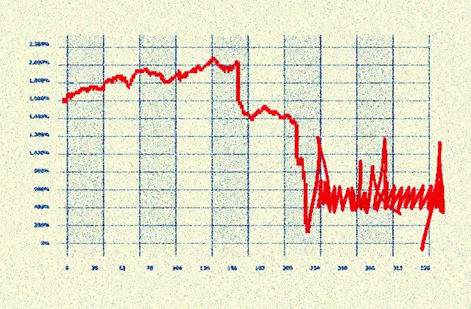|
|
|
|
|
|
 |
|
|
|
| |
Trump
Economy:
Six
Months
In -
Boom or
Bust?
Mixed
signals
emerge
as
President
weighs
trade
wars
against
strong
fundamentals
Li Haung
-
National-Politics
Tell Us
USA News
Network
WASHINGTON
- Six
months
into
President
Donald
Trump's
second
term,
the
American
economy
presents
a tale
of two
narratives:
robust
growth
metrics
that the
White
House
touts as
validation
of
"America
First"
policies,
alongside
mounting
concerns
from
economists
about
the
long-term
sustainability
of the
current
trajectory.
The
Numbers
Tell a
Strong
Story
The
latest
GDP
figures
released
this
week
showed
the
economy
expanded
at a
3.0%
rate in
the
second
quarter,
exceeding
expectations
and
reversing
a modest
decline
from the
previous
quarter.
The
unemployment
rate
remains
historically
low at
just
over 4
percent,
with
671,000
payroll
jobs
created
during
the
first
five
months
of the
administration.
Core
inflation
has
tracked
at just
2.1% —
levels
not seen
since
the
first
Trump
Administration
— and
right in
line
with the
Federal
Reserve's
inflation
target.
The
White
House
has
seized
on these
figures
as
evidence
that
Trump's
economic
agenda
is
delivering
results.
"The
data
speaks
for
itself,"
Treasury
Counselor
Joseph
Lavorgna
declared,
calling
the GDP
report
"an
absolute
blockbuster."
Tariff
Tensions
Create
Headwinds
Yet
beneath
the
positive
headline
numbers,
warning
signs
are
flashing.
Trump
faced a
financial
market
backlash
when he
imposed
sweeping,
double-digit
tariffs
on
nearly
every
country
in the
world,
with
major
stock
markets
plummeting
and bond
markets
flashing
warning
signs.
The
damage
to the
global
economy
from
American
protectionism
is
becoming
increasingly
evident,
with US
protectionism
slowing
investment
and
rewiring
supply
chains
at the
expense
of the
global
economy.
Analysts
at
Morgan
Stanley
said
"the
most
likely
outcome
is slow
growth
and firm
inflation,"
though
they
stopped
short of
predicting
a
recession.
The
European
Union
and
Japan
have
begun
accepting
Trump's
15%
tariff
regime,
representing
what
some
economists
see as a
concerning
shift
toward
global
trade
fragmentation.
The
Inflation
Wildcard
One of
the
biggest
questions
facing
the
Trump
economy
involves
the
Federal
Reserve's
monetary
policy.
Trump
continues
to
pressure
Fed
Chair
Jerome
Powell
for
substantial
rate
cuts,
though
many
economists
warn
such
cuts
could
risk an
inflationary
spike.
Despite
tariff
fluctuations,
inflation
has
remained
relatively
mild,
rising
just 2.4
percent
in May —
the
lowest
since
2021.
However,
economists
worry
that
continued
trade
tensions
combined
with
aggressive
monetary
easing
could
reignite
price
pressures.
Looking
Ahead:
Sustainable
Growth
or Sugar
High?
The
Trump
administration
is
betting
heavily
on its
"One,
Big,
Beautiful
Bill" —
a
comprehensive
tax and
regulatory
package
that the
Council
of
Economic
Advisors
projects
could
increase
GDP by
up to
5.2
percent
in the
short-term
and up
to 3.5
percent
in the
long-run.
Critics
argue
that the
current
growth
may
represent
a
temporary
sugar
high
rather
than
sustainable
expansion.
While
Trump
appears
to be
getting
his way
with the
world
economy,
with
trading
partners
accepting
higher
costs
through
tariffs,
the
question
remains
whether
this
approach
can
maintain
momentum
without
triggering
broader
economic
disruption.
As one
economist
put it:
"I'm
pretty
bullish
right
now on
the
economy,"
reflecting
the
cautious
optimism
many
feel
despite
underlying
concerns.
The
coming
months
will
likely
determine
whether
Trump's
second-term
economic
experiment
represents
a
sustainable
boom or
sets the
stage
for
future
economic
volatility.
For now,
the
fundamentals
remain
strong,
but the
structural
changes
to
global
trade
relationships
introduced
by this
administration
continue
to
create
uncertainty
about
the path
ahead.
This
story is
developing
as
economic
data
continues
to
emerge
throughout
the
week.
|
|
|
|
|
|
|
|
|